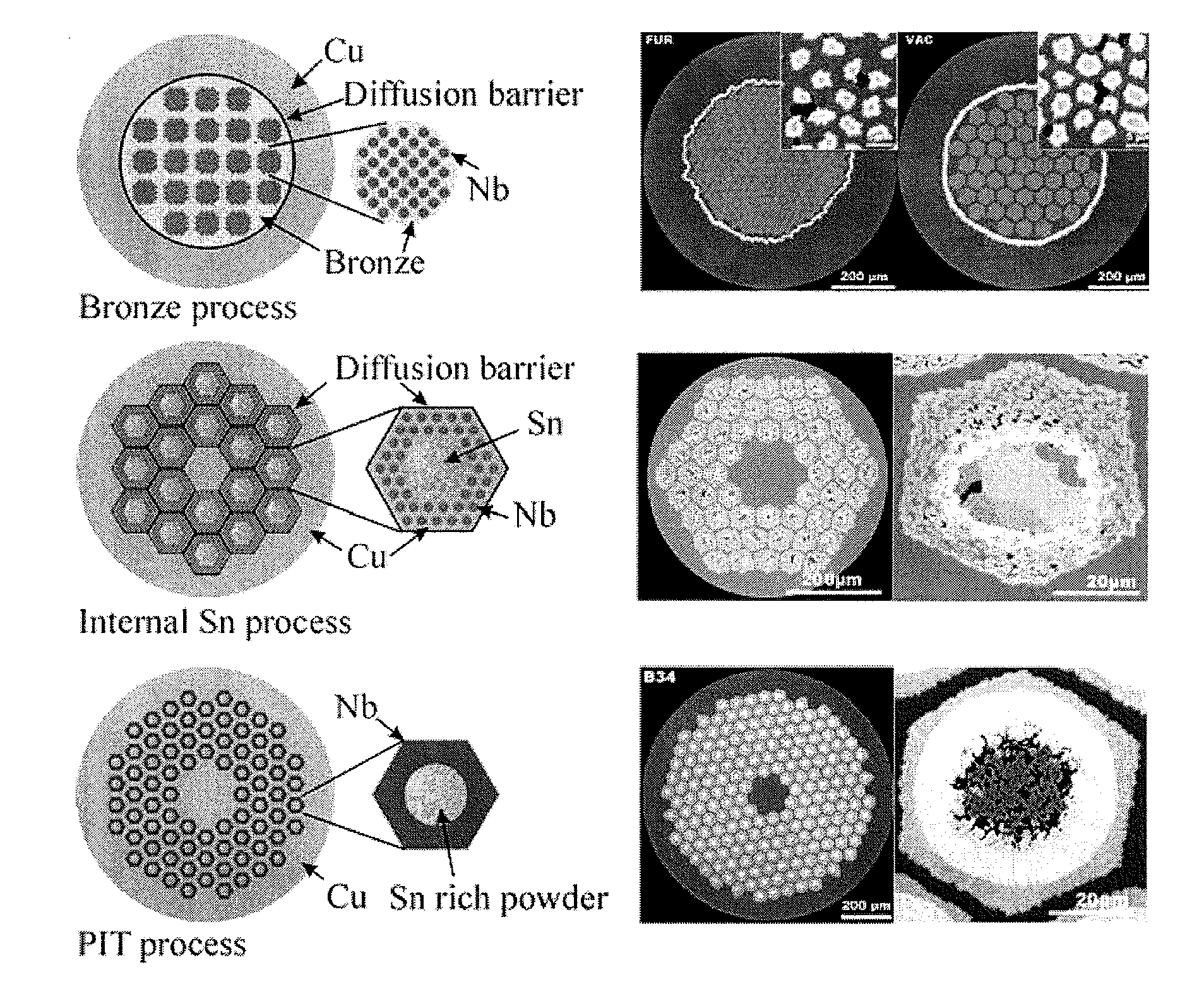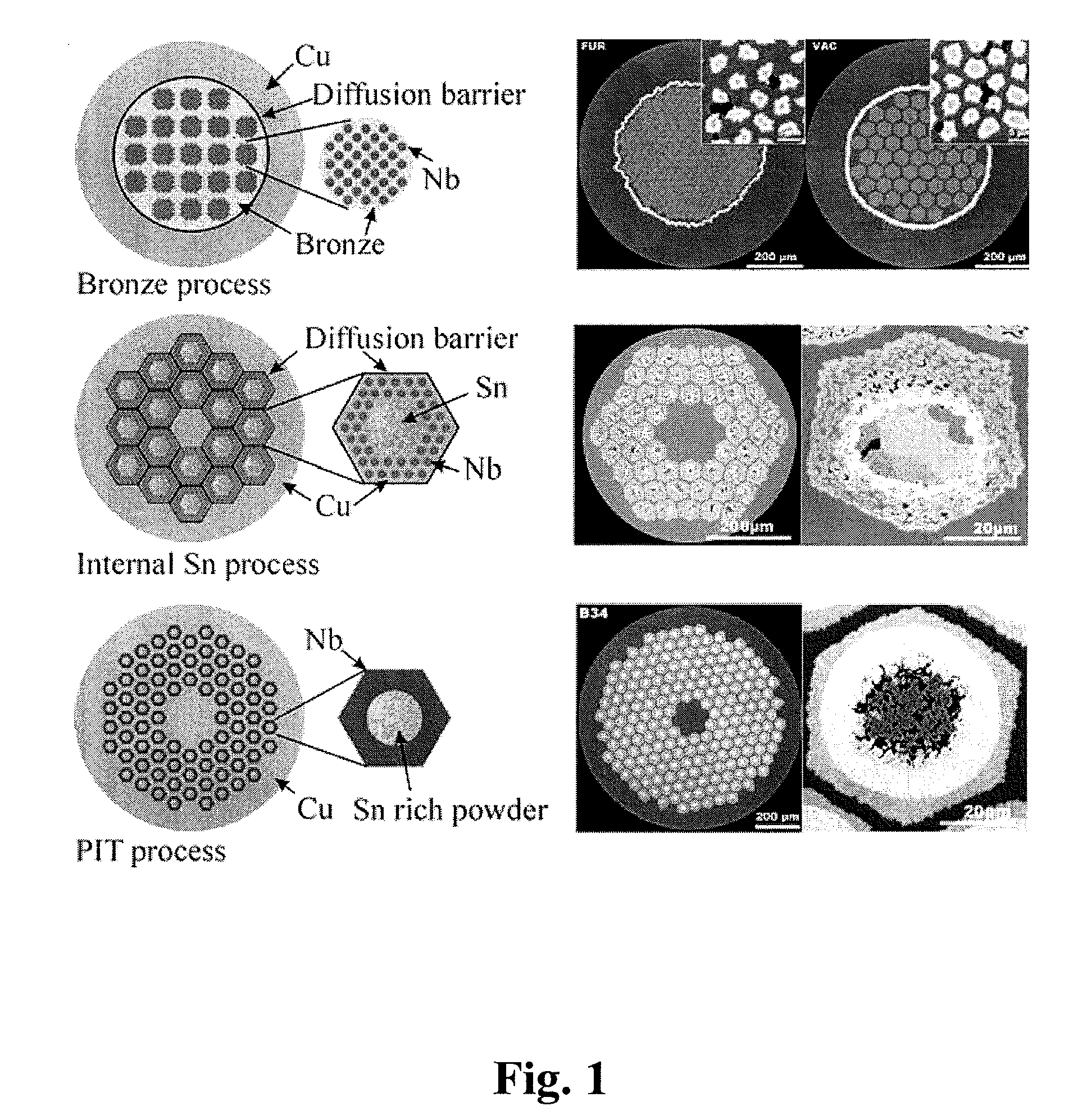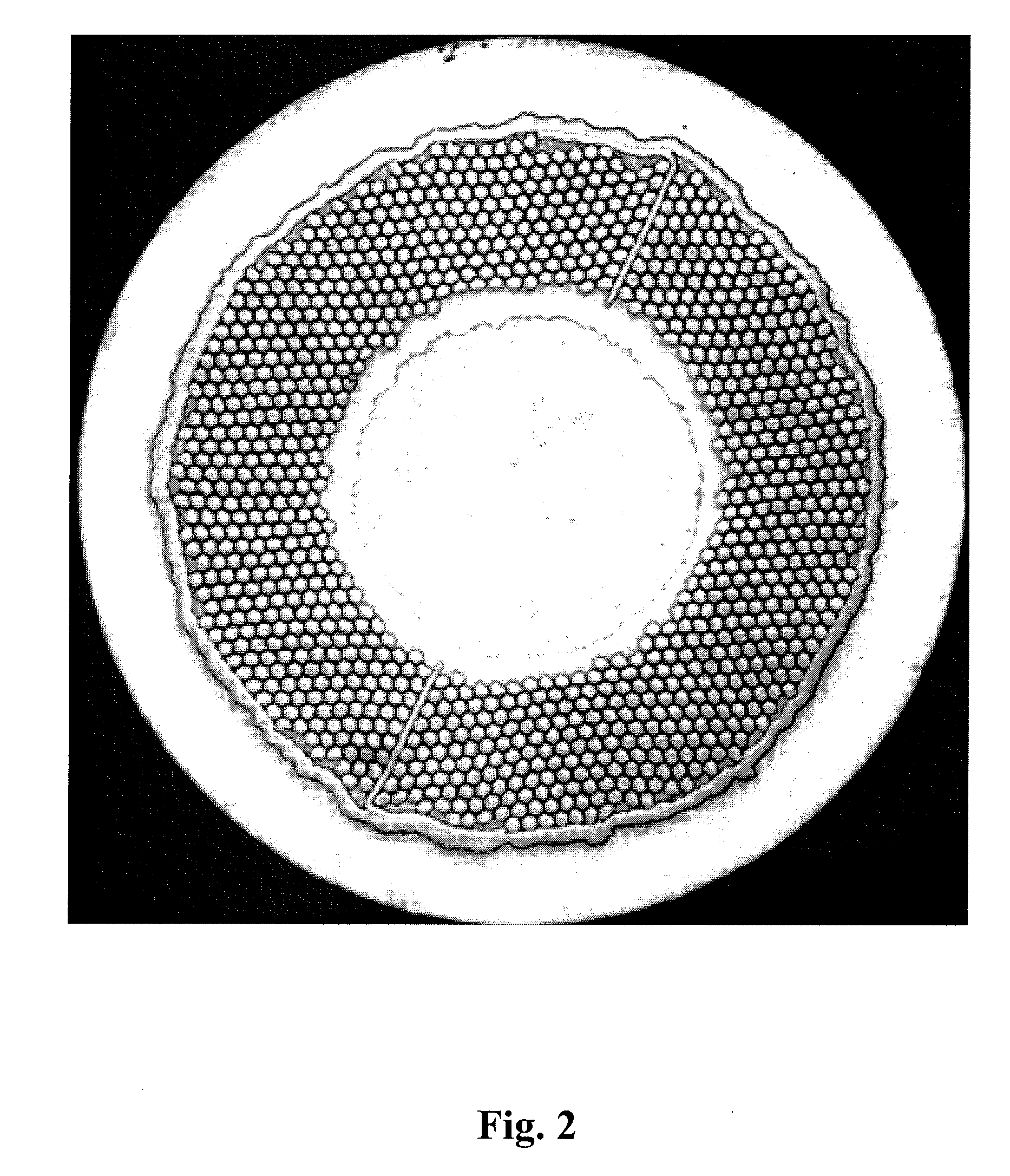Powder-in-tube process and method of manufacture
- Summary
- Abstract
- Description
- Claims
- Application Information
AI Technical Summary
Benefits of technology
Problems solved by technology
Method used
Image
Examples
Embodiment Construction
[0030]In order to attain a low cost PIT process for an advanced multifilament Nb3Sn design, new intermetallic compounds with tin must be substituted for NbSn2. In addition, a lower cost Nb alloy tube must be substituted for the current Nb7.5Ta tube utilized in state-of-the-art PIT conductors.
[0031]It is an object of this invention to utilize a new high-tin intermetallic powder compound. In a preferred embodiment, this intermetallic compound is MnSn2. Another object of this invention is to utilize a Nb-1% Zr alloy tube. The purpose of Nb-1% Zr is to reduce the cost of the tube from approximately $288 / lb to approximately $90 / lb.
[0032]MnSn2 has a melting point of about 550° C. and contains 81% tin by weight. This particular compound has unique unexpected characteristics. An important characteristic discovered while investigating this compound was the result of a solid core within the PIT sub-elements after the heat treatment reaction was complete. This is shown in FIG. 4a. Porosity wit...
PUM
| Property | Measurement | Unit |
|---|---|---|
| Temperature | aaaaa | aaaaa |
| Time | aaaaa | aaaaa |
| Percent by mass | aaaaa | aaaaa |
Abstract
Description
Claims
Application Information
 Login to view more
Login to view more - R&D Engineer
- R&D Manager
- IP Professional
- Industry Leading Data Capabilities
- Powerful AI technology
- Patent DNA Extraction
Browse by: Latest US Patents, China's latest patents, Technical Efficacy Thesaurus, Application Domain, Technology Topic.
© 2024 PatSnap. All rights reserved.Legal|Privacy policy|Modern Slavery Act Transparency Statement|Sitemap



